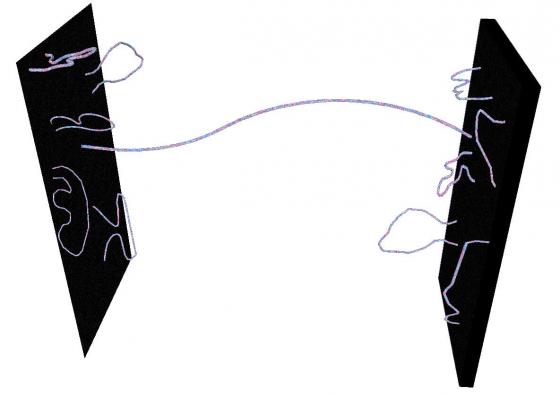Despite its extraordinary success, the Standard Model exhibits a series of problematic features at both theoretical and phenomenological levels, leading physicists to believe that the SM is in fact incomplete and that, at higher energies, it should be replaced by some new physical theory.
From the theoretical point of view, one of the most unsatisfactory features of the SM is its inability to incorporate gravity, an interaction which certainly has a major role in cosmic evolution. String Theory is the only known physical theory which is able to describe gravity, together with the other fundamental interactions, in a unitary framework consistent with the principles of relativistic quantum mechanics. One of the most encouraging achievements of string theory to date has been the attainment, for the first time after decades of efforts, of a precise description of the microscopic quantum properties of black holes.
The essential idea of string theory is that elementary physical entities are not point-like, as they are in quantum field theory, but are spatially extended objects, i.e. one-dimensional strings. More recently it has been discovered that the dynamics of string theory necessarily includes membranes and higher-dimensional generalizations of them, which have been named D-branes. The discovery of D-branes in string theory has permitted the derivation of exact results on the dynamics of supersymmetric field theories living on those D-branes. Thus, although string theory was originally developed as a quantum theory of gravity, it has also provided powerful new mathematical methods for the study of the non-perturbative strong coupled regime of ordinary quantum field theories. (See the section on "Statistical Field Theory").

String theory suggests that the quantum description of gravitational interaction requires some modification to the fundamental notions of quantum field theory, but the physical principles underlying this generalization are not yet clear. In our department, we study several "exotic" quantum theories, like topological field and string theories or higher-spin gauge theories; these models are theoretical laboratories in which is possible to develop, in a simplified context, new mathematical methods for the study of non-perturbative properties of field and string theories and thus to gain some insight into the various conceptual issues arising from string theory.



